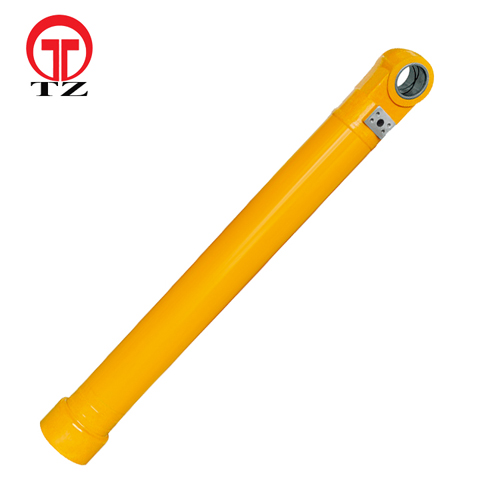Nếu bạn làm việc trong ngành xây dựng hoặc khai thác mỏ, bạn có thể quen thuộc với cụm xi lanh gầu. Những bộ phận thủy lực này rất cần thiết cho máy móc hạng nặng hoạt động dựa vào hệ thống thủy lực., chẳng hạn như máy xúc, máy xúc lật, và các trình tải phía trước.
Cụm xi lanh gầu là một bộ phận thiết yếu trong hệ thống phụ kiện của máy xúc, cung cấp năng lượng thủy lực cần thiết để mở và đóng thùng. Cùng tìm hiểu các bộ phận chính và hoạt động của xi lanh gầu thủy lực.
Khi nói đến việc lựa chọn cụm xi lanh gầu, điều cần thiết là chọn một cái được thiết kế riêng cho máy của bạn và mục đích sử dụng. Việc lắp ráp không đúng hoặc lắp kém có thể dẫn đến giảm hiệu suất, rò rỉ, và cả những thất bại thảm hại. Ngoài ra, lắp ráp xi lanh chất lượng nên lựa chọn thông qua hàng đầu Nhà sản xuất lắp ráp xi lanh BUCKET.

Các thành phần của cụm xi lanh xô
- Ống xi lanh – Thân xi lanh bên ngoài chứa các bộ phận bên trong và chứa chất lỏng thủy lực dưới áp suất.
- pít tông – Một đĩa tròn bên trong ống hình trụ chia nó thành hai buồng. Tách các phần áp suất cao và áp suất thấp của hệ thống.
- Thanh pít-tông – Một thanh đặc kéo dài ra khỏi một đầu của hình trụ và gắn vào piston. Nó truyền lực đẩy hoặc kéo.
- Con dấu – Vòng cao su ngăn chặn sự rò rỉ chất lỏng qua piston và thanh truyền.
- Giá đỡ – Giá đỡ kim loại dùng để gắn xi lanh vào gầu và xe.
Làm việc của xi lanh xô
Khi chất lỏng thủy lực được điều áp đi vào một bên của ống xi lanh, nó tác dụng lực lên piston làm cho cần piston giãn ra. Điều này đẩy khớp trên thanh chống lại một khung trên cơ chế đóng thùng xô, buộc xô mở.
Khi chất lỏng đi vào phía bên kia của xi lanh, thanh piston rút lại. Điều này kéo khớp gắn vào nó, lần lượt kéo chuỗi hoặc liên kết được kết nối với cơ chế đóng thùng xô, khiến thùng đóng lại.
